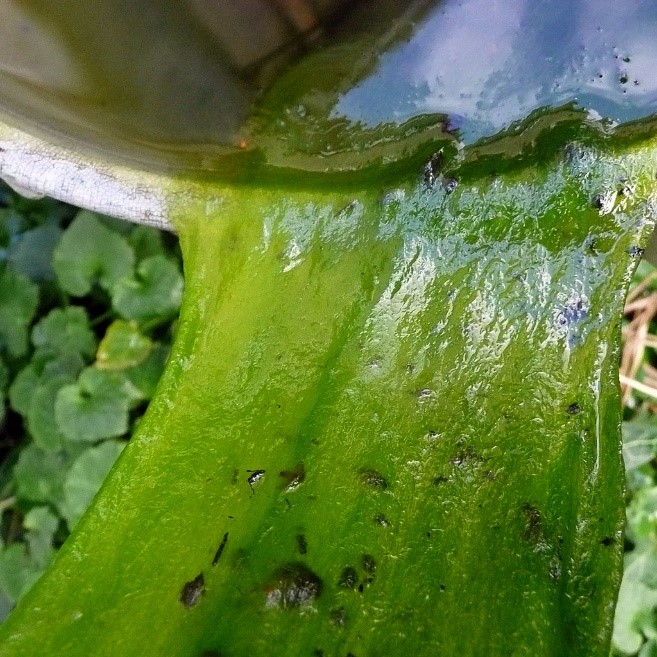Spirogyra
algae identification
Spirogyra is a genus of filamentous green algae belonging to the class Zygnematophyceae. These algae are commonly found in freshwater habitats such as ponds, lakes, and slow-moving streams, where they form dense mats or floating colonies. Spirogyra algae are characterised by their distinctive spiral-shaped chloroplasts, which give them their name.
- String or hair-like in appearance
- Occurs in masses or in mats
- Bright green to yellow-green in colour
- Slimy to touch
- When lifted out of the water with a stick, it will stay on the stick as a bundle of slimy threads of string/hair
- Can appear to “bubble” just under the water’s surface
- Cyanobacteria (blue-green algae)
- Cyanobacteria will disperse and cloud the water when attempted to be picked up by a stick, and will coat the stick like paint
Spirogyra algae play important roles in aquatic ecosystems as primary producers, contributing to food webs and nutrient cycling processes. They provide habitat and food for various aquatic organisms, including small invertebrates and microorganisms.
What does Spirogyra look like?
Disadvantages of Spirogyra
Large blooms of Spirogyra algae can deplete oxygen levels in the water, leading to fish kills and other negative impacts on aquatic organisms. Additionally, decaying Spirogyra mats can release nutrients into the water, contributing to eutrophication and algal blooms.
treatment
Coptrol – Algaecide control designed to kill algal cells. Use on mild to severe algae blooms
Aquatic skimmer – A skimmer is a physical DIY removal tool to scoop the mats of algae out of the water, if you cannot use an Algaecide
GreenClear Pond – This treatment is designed for manmade enclosed fish ponds only. GreenClear Pond targets green slime and sludge and is safe for fish.
prevention options
Aquatic Blue Dye – Blue dye that may reduce temperature of the water body by reducing UV light penetration. This may then increase oxygen saturation.
Phoslock – Phosphorous is the main food source for algae. By reducing the nutrient input, algae do not have enough food to replicate.
Barley Straw Bales and Barley Straw Extract – Barley Straw works to suppress the future growth of algae.
Waterbac – Beneficial Bacteria helps to reduce excess nutrients in the water body which may lead to an algal bloom.



